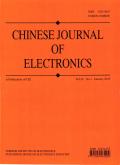稀疏同构学习:稀疏学习的一种新方法
IF 3
4区 计算机科学
Q3 ENGINEERING, ELECTRICAL & ELECTRONIC
引用次数: 0
摘要
许多稀疏表示问题归结为求解受解稀疏性限制的欠定线性方程组。人们提出了许多方法,如稀疏贝叶斯学习。为了更直观地提高解的稀疏性和有效性,提出了一种从线性方程组的通解出发的新方法。通解分解为特解和齐次解,其中齐次解被设计成尽可能多地抵消特解的元素,使通解稀疏。首先,构造一个特殊的线性方程组,将齐次解与特解联系起来,这通常是一个不一致的方程组。其次,从系统中提取出最大的一致性子系统,使两个解的对应元素尽可能多地相互抵消。通过提高实现效率,该过程可以在适度的计算时间内完成。大量的稀疏信号恢复和图像重建实验结果表明,该方法在稀疏度或恢复精度方面具有优势,且计算量可接受。本文章由计算机程序翻译,如有差异,请以英文原文为准。
Sparse Homogeneous Learning: A New Approach for Sparse Learning
Many sparse representation problems boil down to address the underdetermined systems of linear equations subject to solution sparsity restriction. Many approaches have been proposed such as sparse Bayesian learning. In order to improve solution sparsity and effectiveness in a more intuitive way, a new approach is proposed, which starts from the general solution of the linear equation system. The general solution is decomposed into the particular and homogeneous solutions, where the homogeneous solution is designed to counteract as many elements of particular solution as possible to make the general solution sparse. First, construct a special system of linear equations to link the homogeneous solution with particular solution, which typically is an inconsistent system. Second, the largest consistent sub-system are extracted from the system so that as many corresponding elements of two solutions as possible cancel each other out. By improving implementation efficiency, the procedure can be accomplished with moderate computational time. The results of extensive experiments for sparse signal recovery and image reconstruction demonstrate the superiority of the proposed approach in terms of sparseness or recovery accuracy with acceptable computational burden.
求助全文
通过发布文献求助,成功后即可免费获取论文全文。
去求助
来源期刊

Chinese Journal of Electronics
工程技术-工程:电子与电气
CiteScore
3.70
自引率
16.70%
发文量
342
审稿时长
12.0 months
期刊介绍:
CJE focuses on the emerging fields of electronics, publishing innovative and transformative research papers. Most of the papers published in CJE are from universities and research institutes, presenting their innovative research results. Both theoretical and practical contributions are encouraged, and original research papers reporting novel solutions to the hot topics in electronics are strongly recommended.
 求助内容:
求助内容: 应助结果提醒方式:
应助结果提醒方式:


